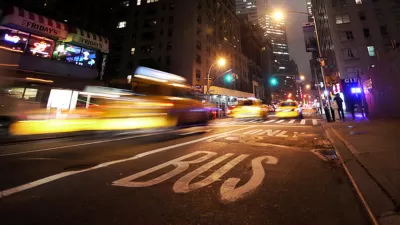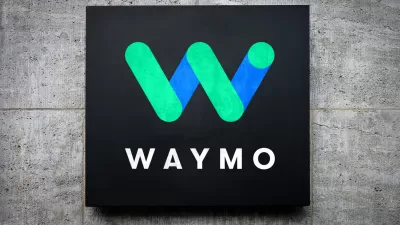Rebecca Solnit writes a pointed criticism of the wave of optimism attached to the self-driving car. Her preference: public transit.

Renowned author Rebecca Solnit begins an editorial for The Guardian by describing a utopian scene with a surprising (to some) setting:
I am rich beyond Google’s wildest driverless-car dreams; I own a fleet of swift and reliable driverless cars that take me where I’m going while I read or stare out the window or watch beautifully limber kids turf dancing in the aisles for my entertainment. I have been riding these liberating transportation marvels for many decades; I have seen the future; it is all of us in these driverless cars we already own together.
Solnit doesn't mean driverless cars in the way Google or Uber does, but she does mean one human driver "per 50 or 500 people"—otherwise known as buses, streetcars, trains, and ferries. According to Solnit, public transit means many city dwellers can afford to skip cars altogether.
Yet with the possibilities offered by transit, Solnit is dismayed by the growing attention paid to self-driving cars.
Here in the shadow of Silicon Valley, it is dismal to see the obsession with privatization when the shifts we need to respond to climate change should include enhanced public transit, both in what fuels those fleets and how well they serve us. Enhanced public transit and reduced private transit.
The way Solnit sees it, self-driving cars are a mechanism by which humans can perpetuate the destructive consequences of the automobile age, while shirking the potential benefits of public transit.
FULL STORY: We don't need self-driving cars – we need to ditch our vehicles entirely

Alabama: Trump Terminates Settlements for Black Communities Harmed By Raw Sewage
Trump deemed the landmark civil rights agreement “illegal DEI and environmental justice policy.”

Planetizen Federal Action Tracker
A weekly monitor of how Trump’s orders and actions are impacting planners and planning in America.

The 120 Year Old Tiny Home Villages That Sheltered San Francisco’s Earthquake Refugees
More than a century ago, San Francisco mobilized to house thousands of residents displaced by the 1906 earthquake. Could their strategy offer a model for the present?

In Both Crashes and Crime, Public Transportation is Far Safer than Driving
Contrary to popular assumptions, public transportation has far lower crash and crime rates than automobile travel. For safer communities, improve and encourage transit travel.

Report: Zoning Reforms Should Complement Nashville’s Ambitious Transit Plan
Without reform, restrictive zoning codes will limit the impact of the city’s planned transit expansion and could exclude some of the residents who depend on transit the most.

Judge Orders Release of Frozen IRA, IIJA Funding
The decision is a victory for environmental groups who charged that freezing funds for critical infrastructure and disaster response programs caused “real and irreparable harm” to communities.
Urban Design for Planners 1: Software Tools
This six-course series explores essential urban design concepts using open source software and equips planners with the tools they need to participate fully in the urban design process.
Planning for Universal Design
Learn the tools for implementing Universal Design in planning regulations.
Clanton & Associates, Inc.
Jessamine County Fiscal Court
Institute for Housing and Urban Development Studies (IHS)
City of Grandview
Harvard GSD Executive Education
Toledo-Lucas County Plan Commissions
Salt Lake City
NYU Wagner Graduate School of Public Service





























